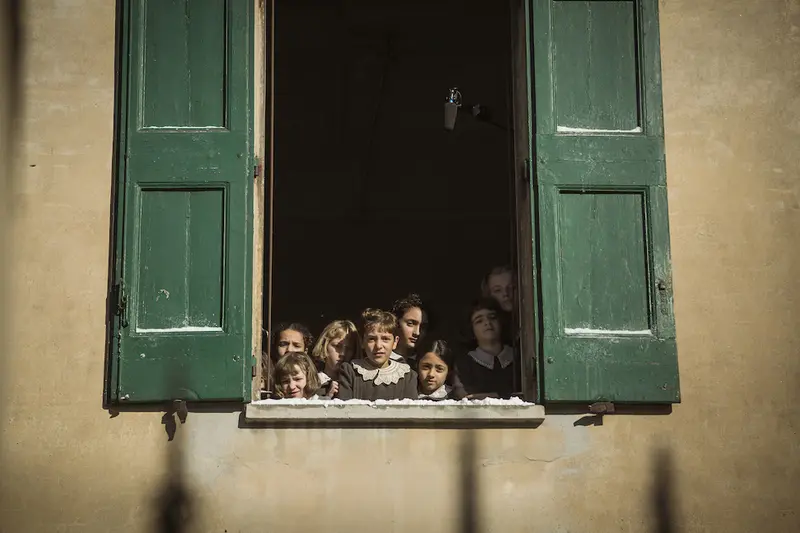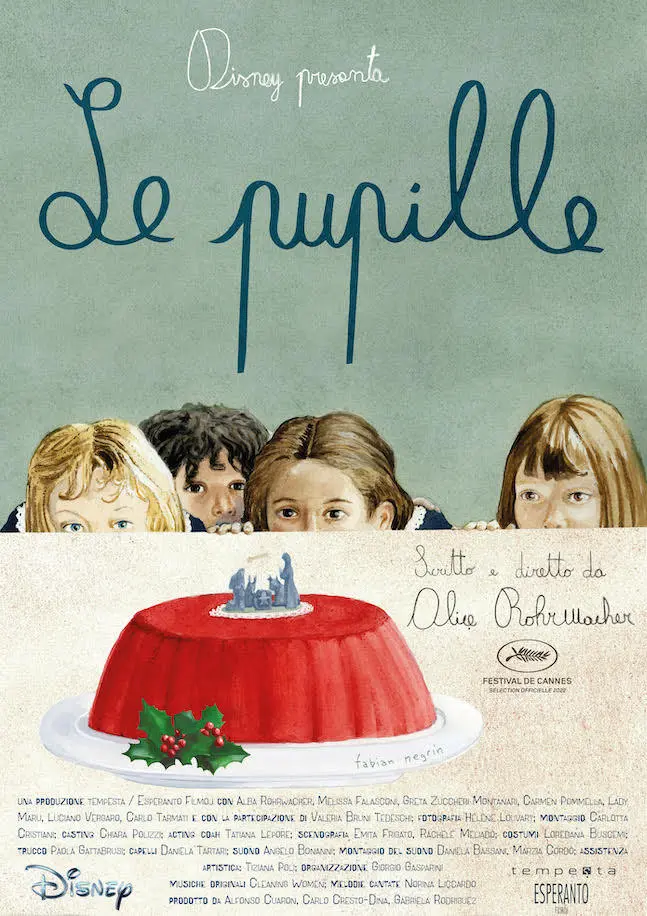

Alice Rohrwacher’s Le Pupille is a 37-minute film shot in Bologna, in the Pio Istituto Sordomute Povere, via della Braina; in the deconsecrated Church of San Barbaziano at the crossroads of via Barberia and via Cesare Battisti; and salita di San Luca.
It tells the story of a group of rebellious orphan girls and four nuns in a Catholic school in Italy during the run up to Christmas against a backdrop of famine and war. “A film about pure desires, and those that are self-serving, about freedom and devotion, about the anarchy can that blossom in anyone’s imagination inside a rigid boarding school. The obedient girls can’t move but the pupils of their eyes can dance unfettered in freedom” read the director’s notes. A spirited tale that ends with a bold moral: what if those considered “bad girls” are actually the best?
Alice Rohrwacher’s Le Pupille is a 37-minute film shot in Bologna, in the Pio Istituto Sordomute Povere, via della Braina; in the deconsecrated Church of San Barbaziano at the crossroads of via Barberia and via Cesare Battisti; and salita di San Luca.
It tells the story of a group of rebellious orphan girls and four nuns in a Catholic school in Italy during the run up to Christmas against a backdrop of famine and war. “A film about pure desires, and those that are self-serving, about freedom and devotion, about the anarchy can that blossom in anyone’s imagination inside a rigid boarding school. The obedient girls can’t move but the pupils of their eyes can dance unfettered in freedom” read the director’s notes. A spirited tale that ends with a bold moral: what if those considered “bad girls” are actually the best?

Esperanto Filmoj, Tempesta
A facetious coming-of-age fable that ends with a cheeky moral: what if allegedly «bad girls» were the best?